Thrive Up High: Choosing Blooms for Vertical Gardens
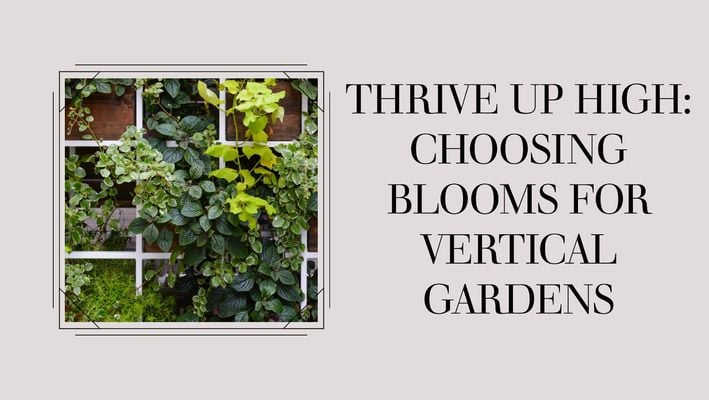
Flowers for Vertical Gardens: How to Choose Blooms That Thrive in Hanging Displays
Key Points about Vertical Gardening:
- Vertical gardens are an innovative approach to gardening that maximize space, improve aesthetics, and contribute to biodiversity. They can be created using various structures like trellis, hanging baskets, or more complex living wall systems.
- The selection of flowers for vertical gardens should be based on the light requirements, watering and care needs, and the hardiness of the plants. It's crucial to match the plants to the specific conditions of your garden and local climate.
- Certain types of flowers and plants are particularly suitable for vertical gardens. These include perennial vines like Clematis, trailing annuals like Petunias and Geraniums, edible plants like Strawberries, and herbs like Mint and Thyme.
- Proper planting, watering, and maintenance are key to successful vertical gardening. This includes providing enough space for each plant to grow, ensuring proper watering and drainage, regular pruning, and replenishing soil nutrients.
- Vertical gardening is not only a practical solution for space-limited areas but also a creative venture that allows individuals to create their own living work of art. The article encourages readers to embrace the challenge and experience the rewards of vertical gardening.
An Overview of Vertical Gardening and Its Increasing Popularity
Vertical gardening, an innovative and space-efficient approach to gardening, is fast gaining popularity among plant lovers and city dwellers alike. More than just a trend, it represents a shift in how we think about our green spaces, particularly in urban settings where ground space can be a rare commodity. From lush, living walls to hanging baskets bursting with blooms, vertical gardens add a unique aesthetic to any space, be it a cozy apartment or a spacious backyard.
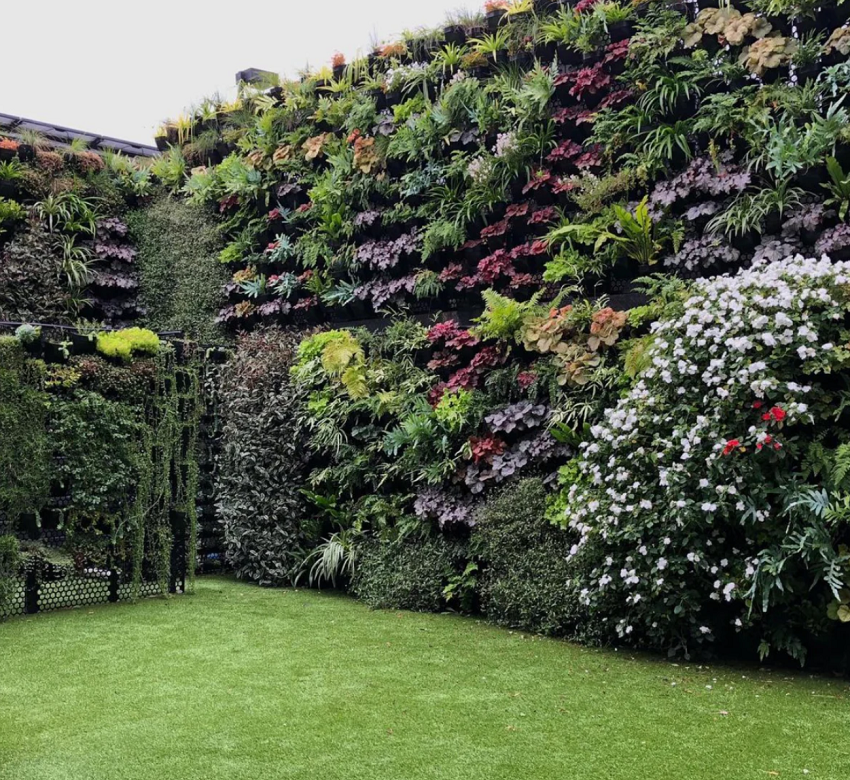
The Goal Of This Post
This article aims to guide enthusiasts on the crucial task of selecting the right flowers for their vertical gardens. More specifically, we'll focus on blooms that not only look fantastic when arranged vertically but also thrive when grown in hanging displays. By understanding the unique needs of vertically grown flowers, readers can transform any vertical space into a flourishing, vibrant garden.
Stay tuned to learn about the different types of flowers suitable for vertical gardening, the key factors to consider when choosing your blooms, and tips to keep your vertical garden thriving. It's time to take your love for gardening to new heights - quite literally!
Understanding Vertical Gardens
Definition and Features of Vertical Gardens
A vertical garden, also known as a green wall, is a garden that grows vertically, using a wall or a structure that supports growth upward rather than spreading horizontally across the ground. The beauty of a vertical garden lies not only in its unique orientation but also in its versatility. Vertical gardens can accommodate a variety of plants, from trailing vines to compact ferns and from radiant flowers to robust edibles, each contributing to a diverse, vertical landscape.
Benefits of Vertical Gardens
There are numerous benefits of vertical gardening. Firstly, it's a great way to maximise limited space, making it ideal for city dwellers or those with small gardens. It can also improve the aesthetic appeal of walls or fences, add privacy, and even contribute to improved air quality. Additionally, vertical gardens can provide a haven for biodiversity, attracting a variety of beneficial insects and birds.
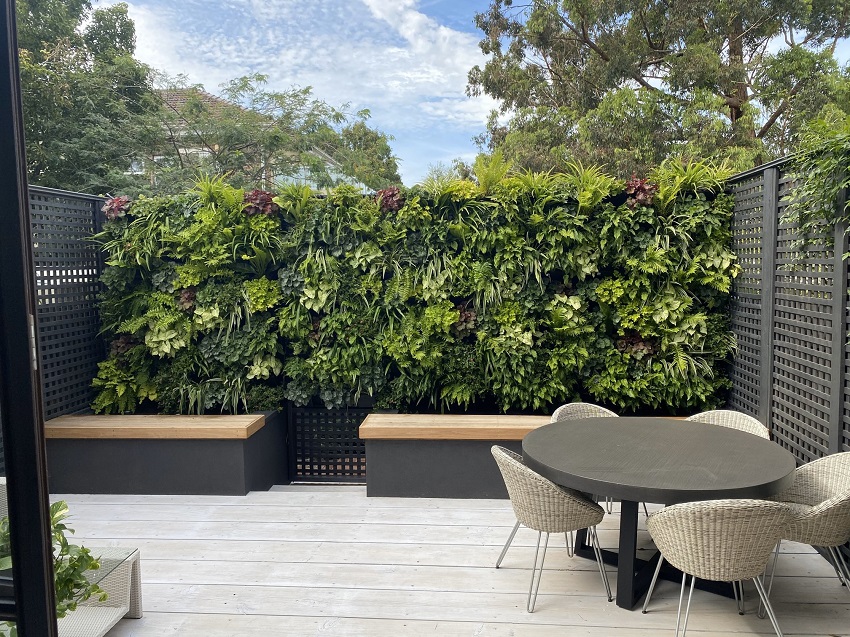
Typical Structures for Hanging Displays
The structures used for vertical gardens vary widely based on space, cost, and personal preference. They can be as simple as a trellis or hanging baskets or as complex as living wall systems, which integrate irrigation. Other options include vertical pouch systems, tiered planters, and DIY setups made from pallets or recycled materials.
Key Considerations When Choosing Flowers for Vertical Gardens
Importance of Light Requirements
When selecting flowers for a vertical garden, one must consider the light requirements of each plant. Some plants thrive in full sun, while others need shade. It's crucial to match your plants with the amount of light your vertical garden will receive daily.
Necessity of Selecting Plants with Similar Watering and Care Needs
It's also essential to select plants with similar watering and care needs. Some plants prefer dry conditions, while others need regular watering. By choosing plants with similar care needs, you ensure that all plants in your vertical garden thrive equally without any particular plant suffering due to mismatched care.
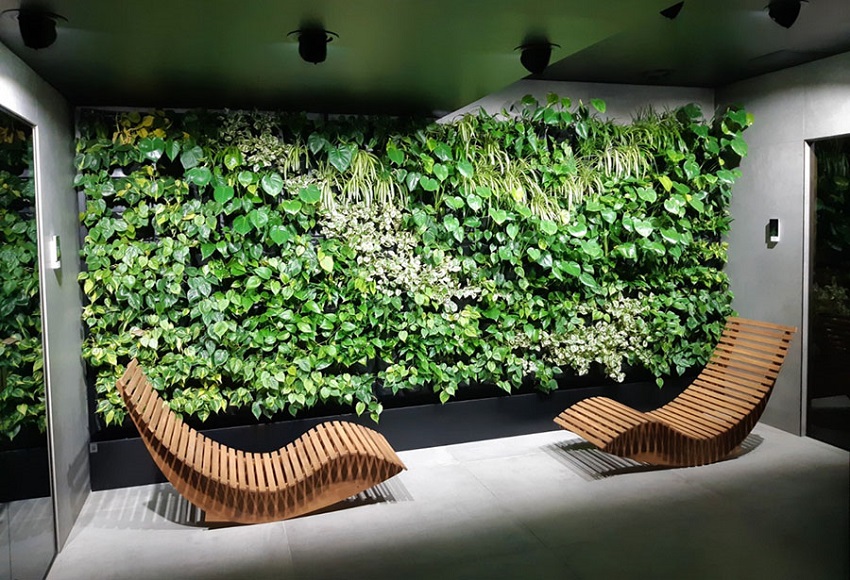
Understanding Your Climate and the Hardiness of Your Chosen Plants
Lastly, understanding your local climate and the hardiness of your chosen plants is key. Not all plants can survive all weather conditions. Make sure to choose plants that can handle your area's temperatures, humidity, and other climatic factors.
Best Flowers for Vertical Gardens
Detailed Rundown of Suitable Flowers
- Perennial Vines (e.g., Clematis): These climbers are popular in vertical gardens for their large, vibrant flowers and their hardiness. Clematis prefers full sun to light shade and requires well-draining soil.
- Trailing Annuals (e.g., Petunias, Geraniums): These flowers are ideal for adding a pop of color to your vertical garden. Both petunias and geraniums enjoy full sun and are relatively low maintenance, requiring only occasional watering once established.
- Edible Plants (e.g., Strawberries): These plants are perfect if you want your vertical garden to serve a dual purpose – to be both visually pleasing and a source of fresh, homegrown produce. Strawberries are fairly easy to grow and prefer full sun with well-draining soil.
- Herbs (e.g., Mint, Thyme): Herbs are a wonderful addition to any vertical garden. They are generally hardy and require little maintenance. Plus, they have the added benefit of being useful in the kitchen. Both mint and thyme prefer full sun to partial shade and require well-draining soil.
Description of Each Flower's Needs and Growth Habits
While each plant has its individual care needs, they all share a few general care requirements. All these plants need to be watered regularly, especially during dry spells. They also benefit from regular feeding, particularly during the growing season. Additionally, they all need some level of sunlight to flourish, whether it's full sun or partial shade.
Tips for Successful Vertical Gardening
Proper Planting and Watering Techniques
When planting, ensure you provide enough space for each plant to grow without crowding others. This also helps with air circulation, reducing the chances of plant diseases. Water your vertical garden regularly, especially during hot weather, but ensure the water drains well to prevent waterlogged conditions that could harm the plants.
Tips for Arranging Flowers for Aesthetic Appeal
For a visually appealing vertical garden, try to mix and match colors, textures, and growth habits. Place trailing plants at the top so they can cascade down, and position the taller ones at the bottom to create balance.
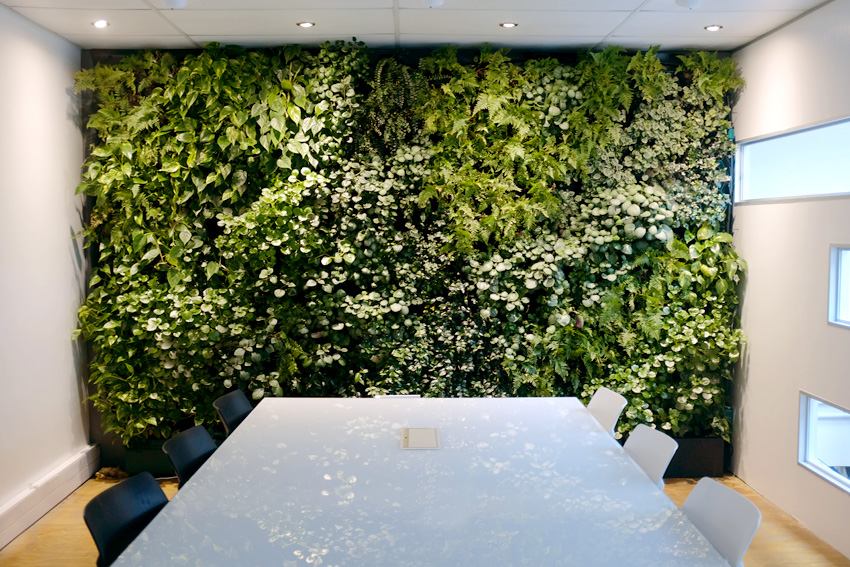
Maintenance and Care Tips
Regular maintenance is crucial for a healthy and thriving vertical garden. This includes pruning to control growth, removing dead or diseased plants promptly, and replenishing nutrients in the soil through regular fertilization.
Broadening Your Vertical Garden
As you embark on your vertical gardening journey, why not consider some of the ideas presented in our other blog posts? For instance, our article on 5 Creative Planter Ideas for a Stylish Indoor or Outdoor Garden could provide you with inspiration on how to house your vertical garden blooms in a way that suits your personal style and the space available.
Moreover, our piece on 4 Flowers You'll Want to Grow in Your Small Garden may provide you with further flower options to include in your vertical garden. Incorporating these small yet impactful flowers could add an extra dimension to your hanging display, creating an even more captivating and diverse garden.
Towards a Sustainable and Dynamic Garden
One of the many beauties of vertical gardening is its potential for sustainability and versatility. With our blog post on Drought-Resistant Plants in Your Gardens, you could learn about various drought-resistant plants to consider for your vertical garden, especially if you live in a dry climate.
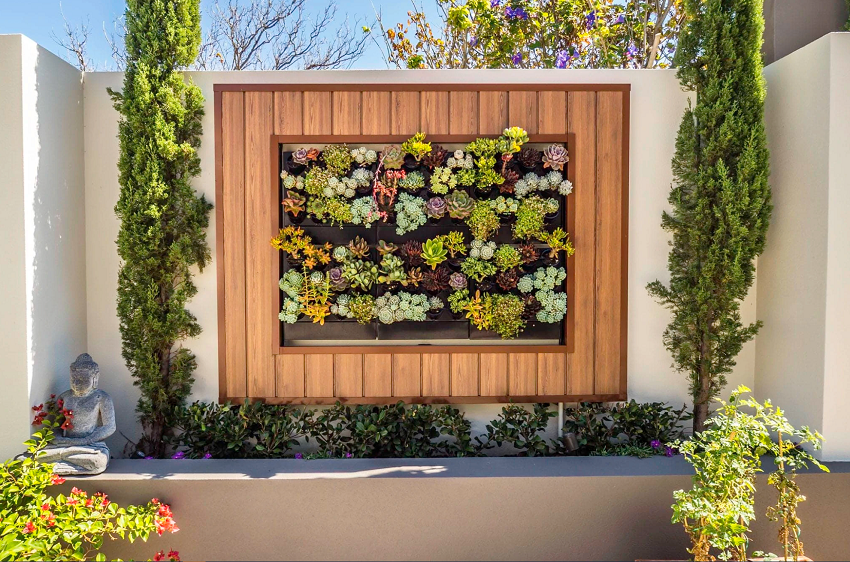
Additionally, why not embrace the unexpected and create a truly dynamic garden? Our article Embracing the Unexpected: A Guide to Flowering Weeds in Your Garden could open up new, exciting possibilities for your vertical display. The addition of flowering weeds, often overlooked for more traditional garden plants, could contribute to a garden that is truly unique and eye-catching.
Conclusion
Recap of Main Points
In conclusion, creating a vertical garden can be an enjoyable and rewarding venture. The key is understanding the unique needs of vertically grown flowers, from light and water requirements to the specific climatic conditions they can withstand. With the right plants, care, and maintenance, you can transform any vertical space into a vibrant, blooming display.
Encouragement for Readers to Try Vertical Gardening
So why not give vertical gardening a go? It's a wonderful way to maximise space, add visual appeal to your home, and even grow your own produce. Embrace the challenge, let your creativity shine, and watch as your vertical garden grows into a living work of art.
